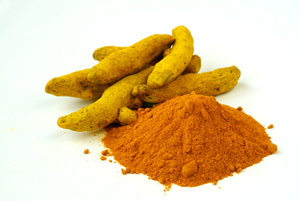Turmeric & Psoriasis

How to Use Turmeric for Psoriasis Treatment
Turmeric is a well-known spice, and using turmeric for psoriasis relief is not just an old wives’ tale. In fact, this spice has been found to be useful in the treatment of a number of health problems, including Alzheimer’s disease, asthma, arthritis, atherosclerosis, Crohn’s disease, diabetes, heart disease and even cancer. Turmeric treatments are also commonly used to treat allergy and sinus problems.
Turmeric is a strong spice that packs a bit of heat, and it is known to work well as an anti-inflammatory, which is why it can be used to treat the symptoms of illnesses that deal with inflammation. When using turmeric for psoriasis treatment, you will actually be using the root of the turmeric, which can be purchased in supplement form at any good health and nutrition shop.
While turmeric is used in a variety of foods and is found in most recipes for Indian curry, the amount of turmeric in most dishes is not enough to successfully relieve psoriasis symptoms. In general, a good curry will use only around one half gram of turmeric in a serving. Treating psoriasis with turmeric requires a daily dose that is much higher, up to 2 teaspoons per day.
Turmeric root comes in powder form or in pill form. Most people prefer the pills since they are easy to take and you know exactly how much you are getting. Turmeric pills generally have 250 milligrams or 500 milligrams per capsule, and they will usually vary in cost. Determine how much you would like ahead of time, so you can get the correct size for your desired treatment plan.
When purchasing the turmeric for psoriasis treatment, ask for assistance to make sure that you get a supplement that is all natural and has no fillers. You also want to be certain that the capsules have an enteric coating that is pharmaceutical grade.
The recommended dosage of turmeric for psoriasis relief is 1.5 grams to 3 grams per day. Depending on how high your daily dose is, you should divide the pills up equally and take them throughout the day instead of all at one time. It may be a good idea to begin the treatment at the lowest dose of 1.5 grams per day. In this case, you would take 3 pills of 500 milligrams each, 3 times per day (breakfast, lunch and dinner work nicely).
Since the turmeric is taken in pill form, it can take awhile before you will see any results from the treatment. Unlike topical treatments that can provide immediate, but temporary, relief, turmeric supplements need some time to get into your system and do their work. In general, most people report seeing changes in their symptoms within a few weeks.
Keep in mind that the turmeric treatment does not treat the cause of the psoriasis, it only treats the symptoms. The results most commonly seen with turmeric supplements are a lessening in redness and reduction in the size of psoriasis patches. As this is not a cure for psoriasis, treatment must continue in order for the results to continue. After long term usage, the patches may even shrink and become barely visible.
As with any change in medical or nutritional habits, turmeric treatments should be taken with caution. If you are on any other medications, it is a good idea to consult your doctor before starting the turmeric supplements. Some prescription drugs do not react well with certain natural remedies, so it is wise to make certain you are not taking something that might cause a negative reaction.